The Art Institute of Chicago
A description of a visit to the Art Institute of Chicago. A weekend in the Windy City is the perfect opportunity to see one of the world’s great art museums.
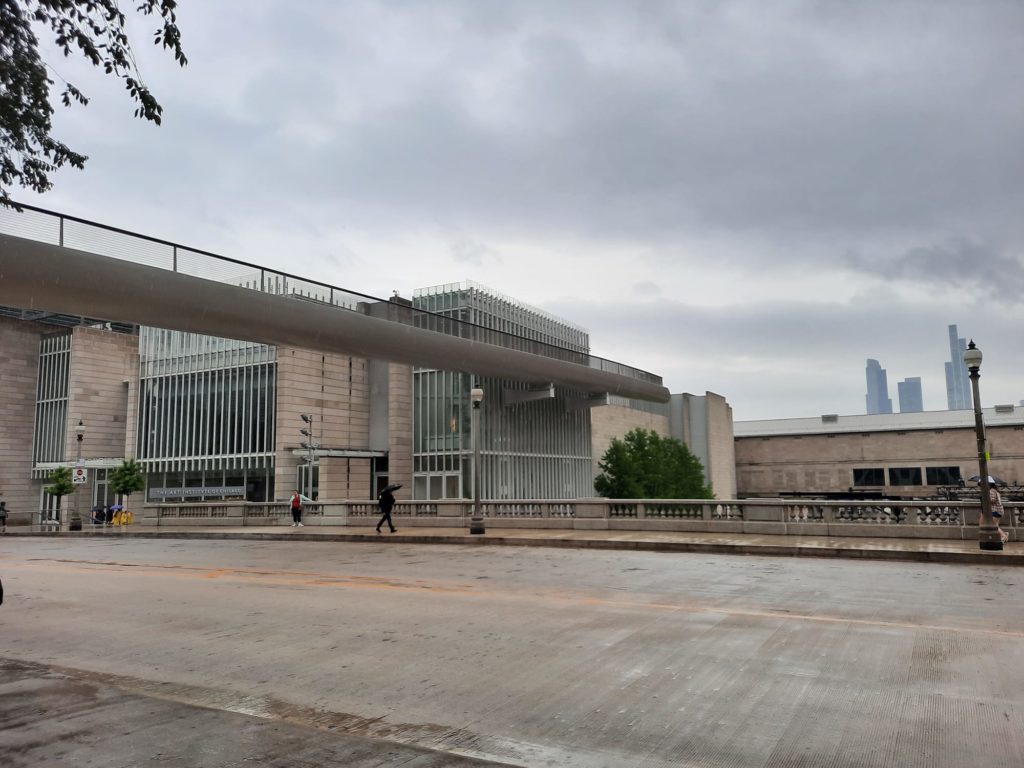
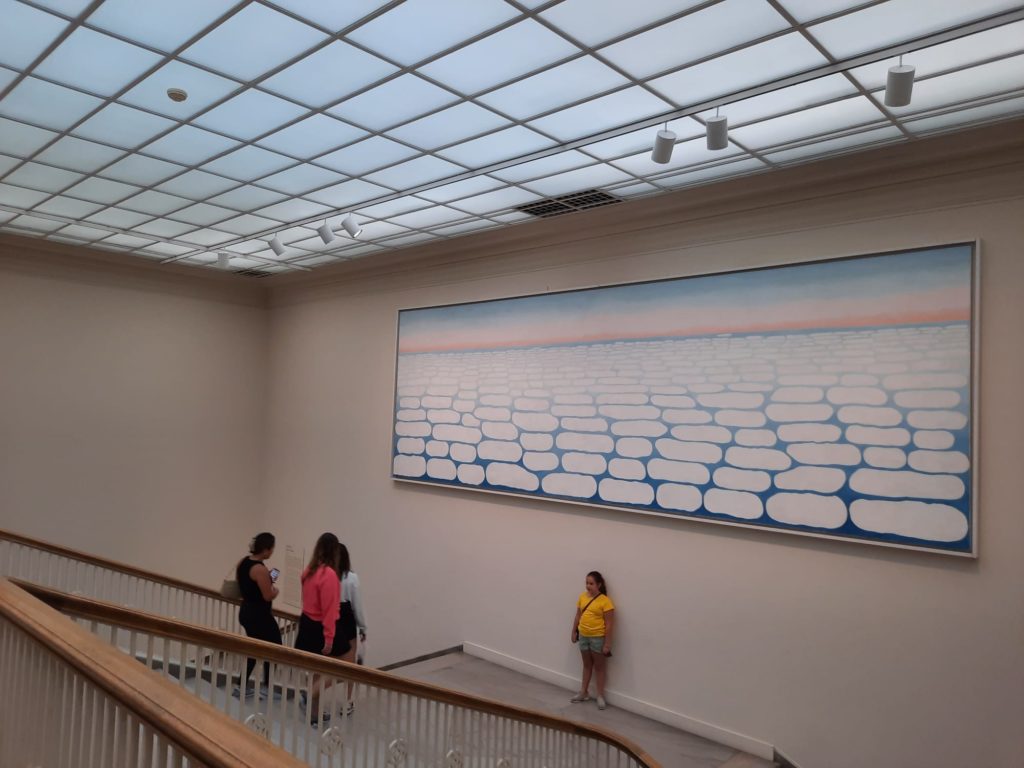
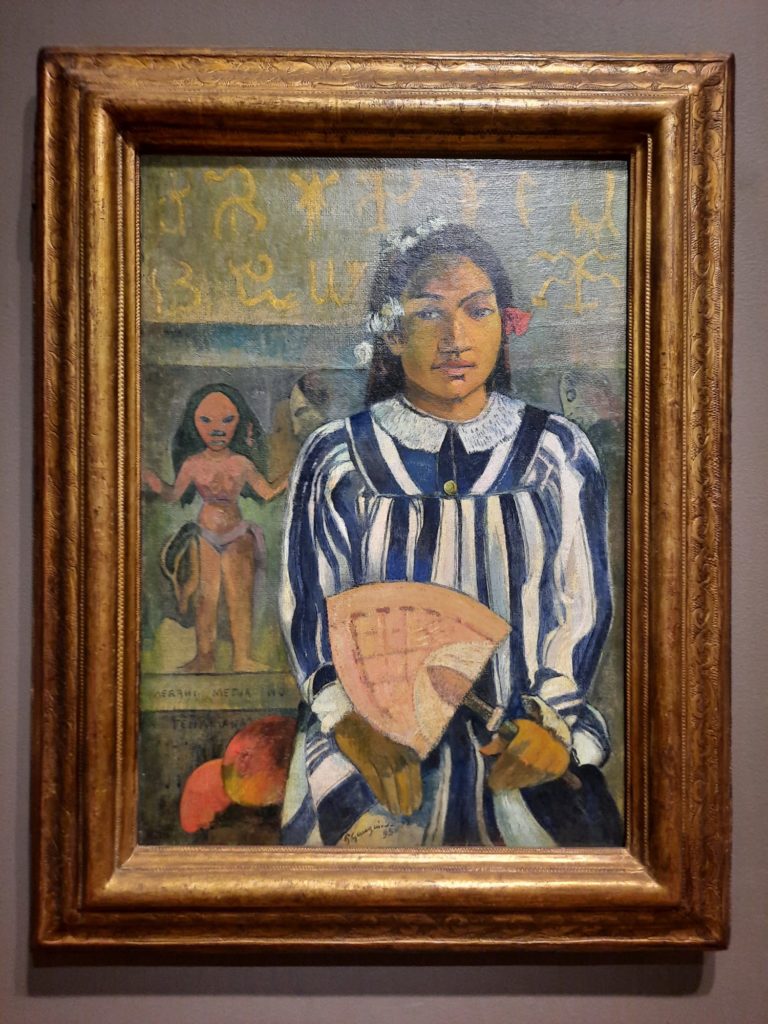
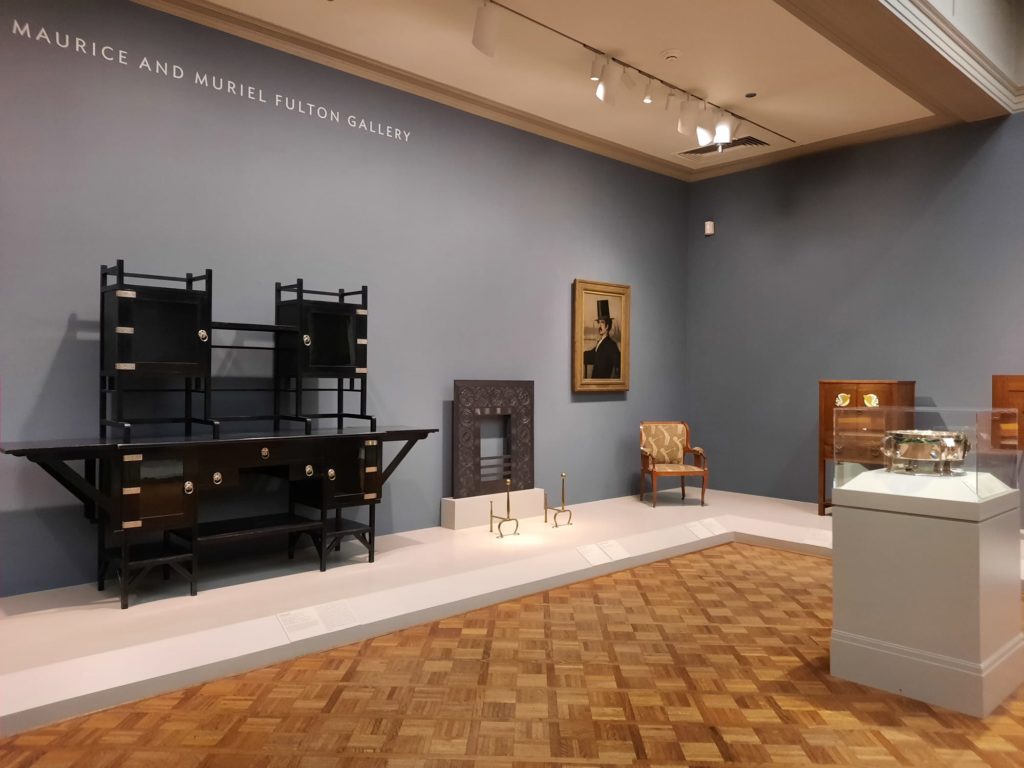
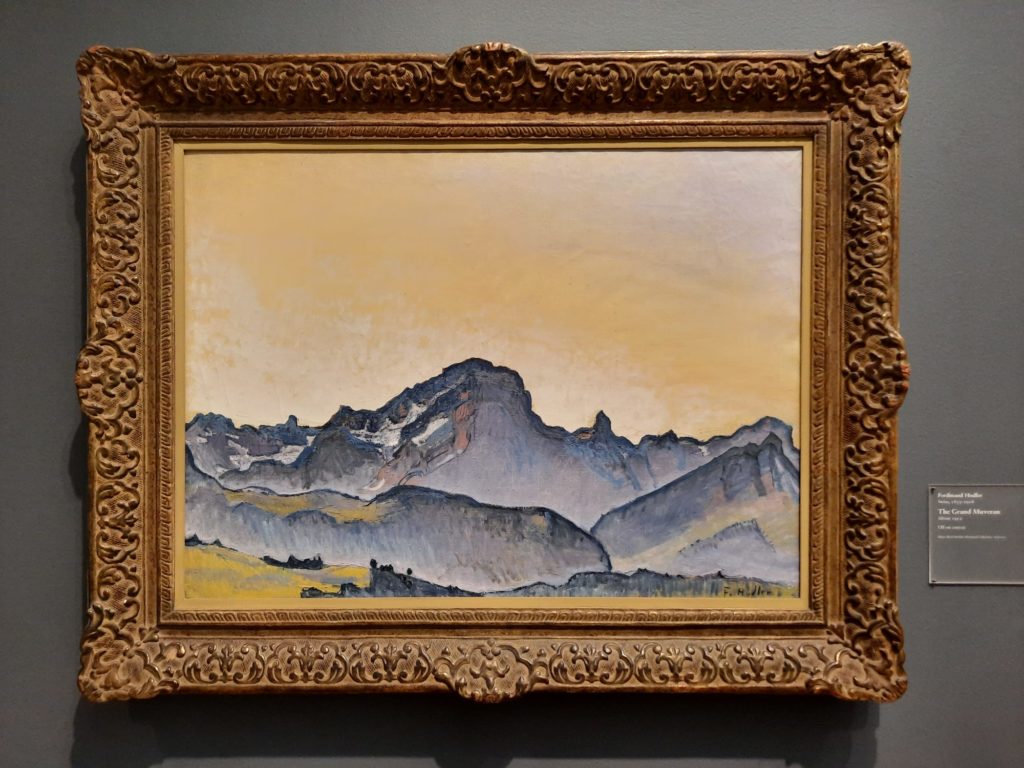
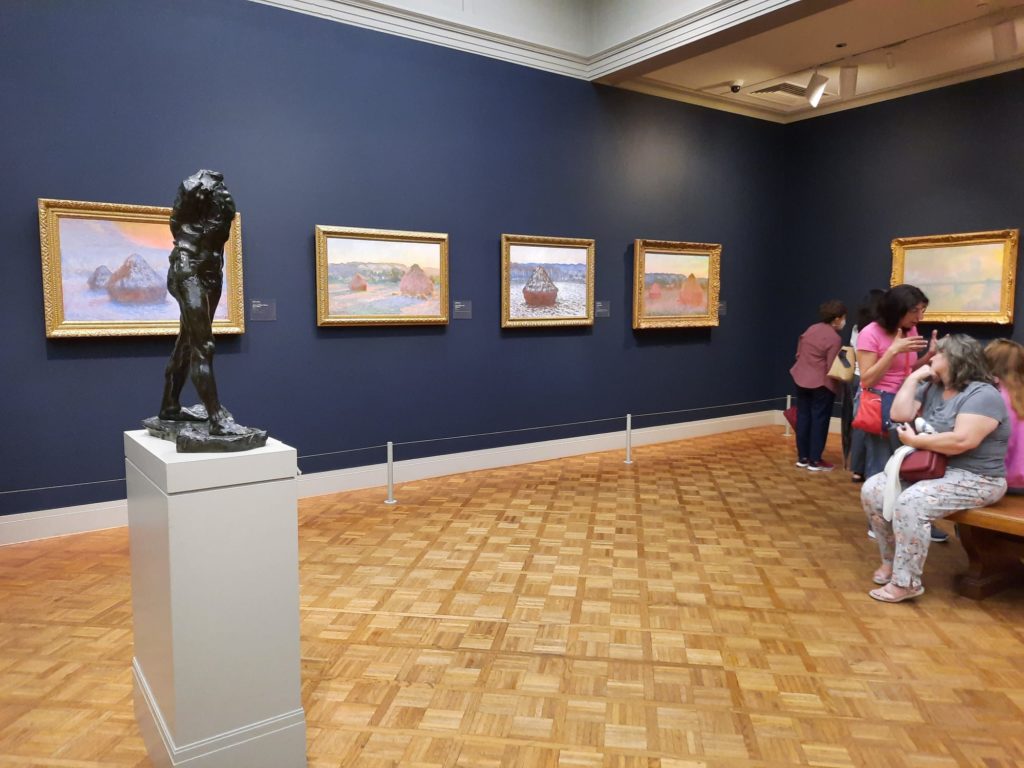
A Trip To Chicago
On a recent trip to the US, I braved airport chaos and various other uncertainties to add on a weekend in Chicago. It’s partly a pledge to myself post-lockdowns that when travel came back I would make the most of it. And also a half-hearted sustainability effort to tack on a trip to a new place when I am already travelling somewhere, rather than adding more long-haul flights into my life. And this was actually my third attempt to tack on a Chicago weekend, the first two having been thwarted by lockdown and a bout of Covid respectively!
In other cities I’ve been to, I’ve tended to write a Guide for Culture Lovers of all my recommendations (see here for Lima, Cusco, Ljubljana and Lisbon). I spent such a short time in Chicago relative to all the things to see and do that I didn’t feel qualified to write such a guide on this occasion. So instead I will content myself with posts on the museums and institutions I visited. You will have to take my word for it that I tried out several of the usual recommendations, from deep dish pizza to skyscraper views to the Navy Pier.
But first on my list of things to see in the Windy City was the Art Institute. And as my first day in Chicago was incredibly rainy, it was a perfect time to spend several hours indoors looking at amazing art. Follow me onwards to learn more!
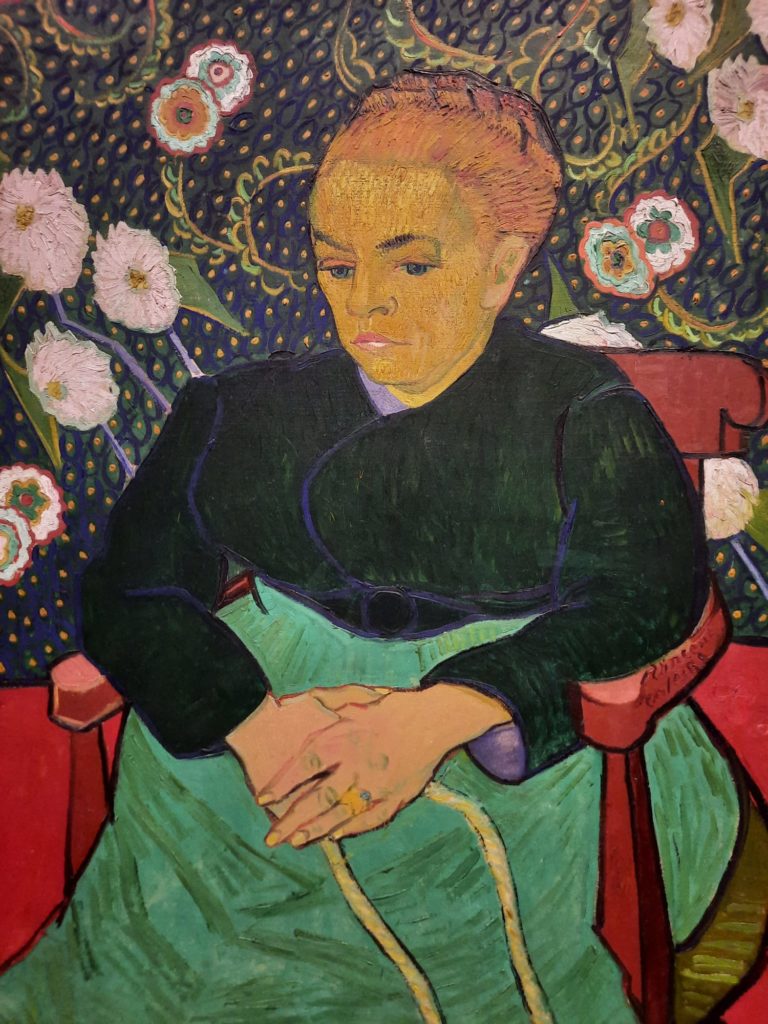
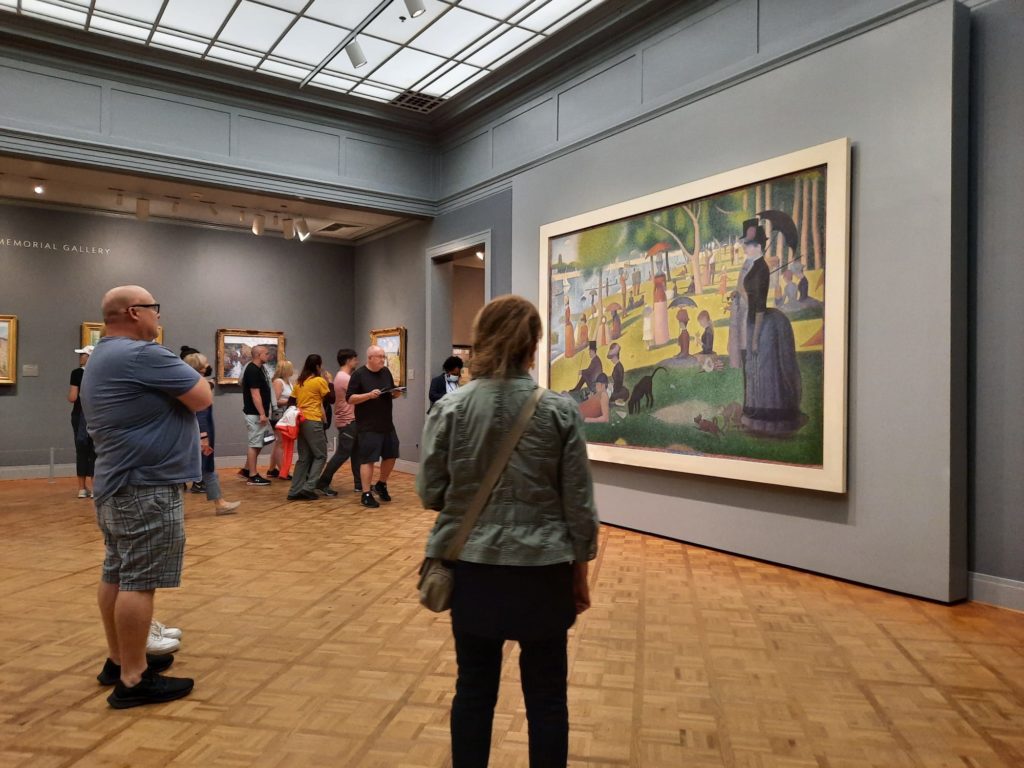
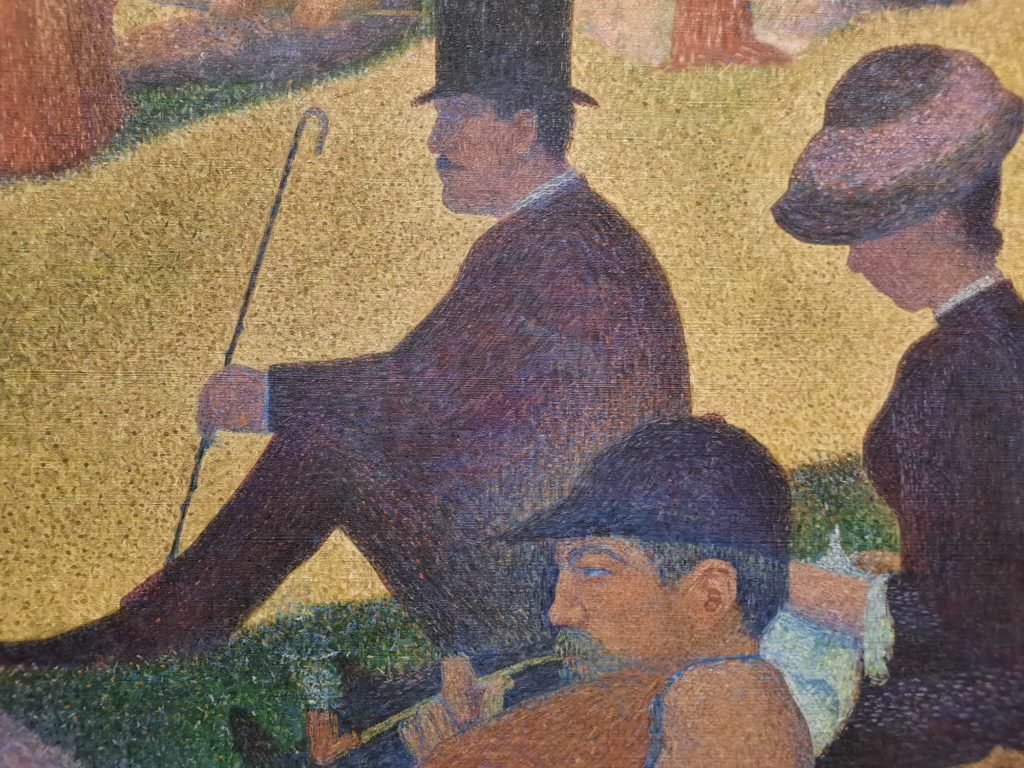
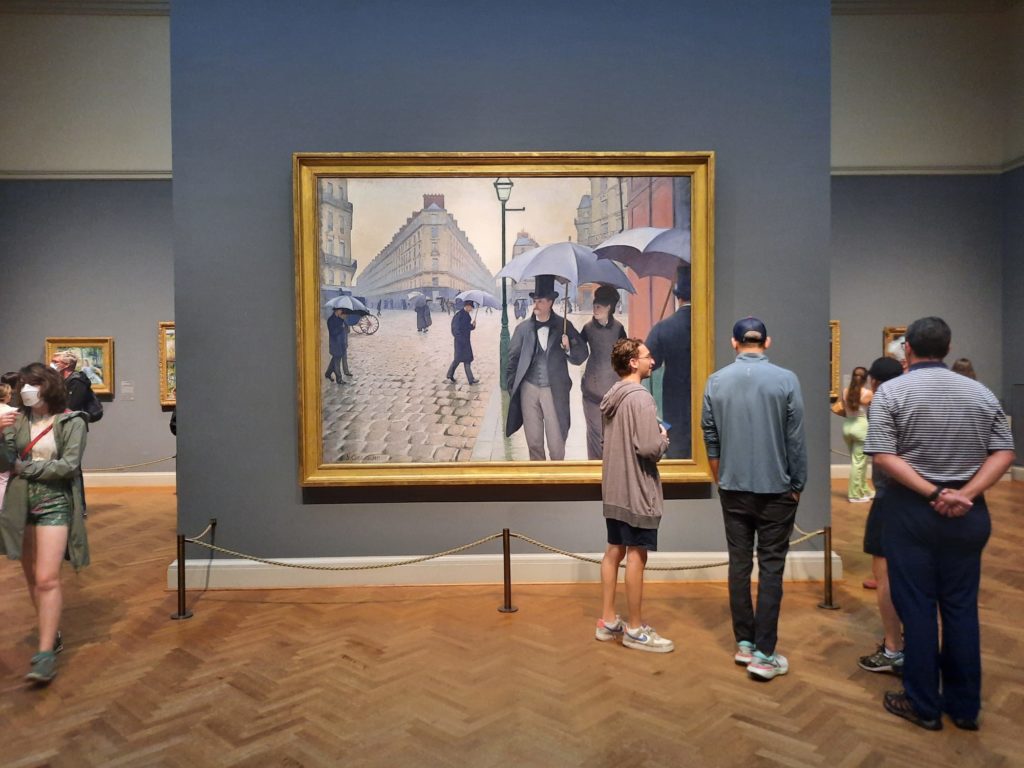
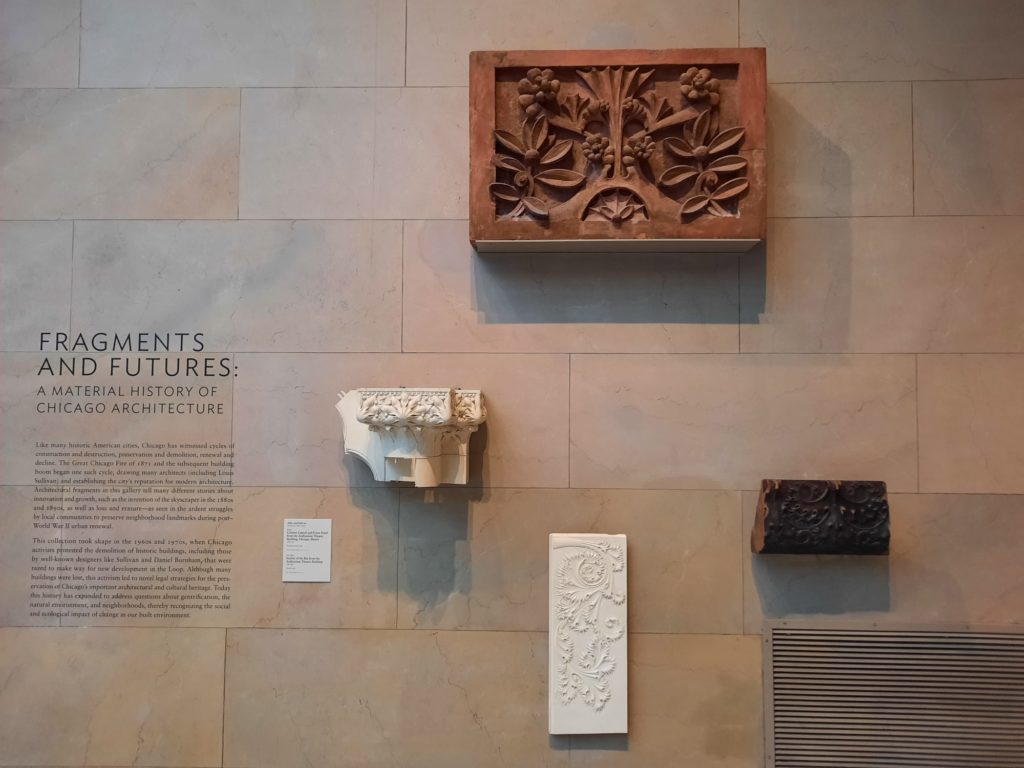
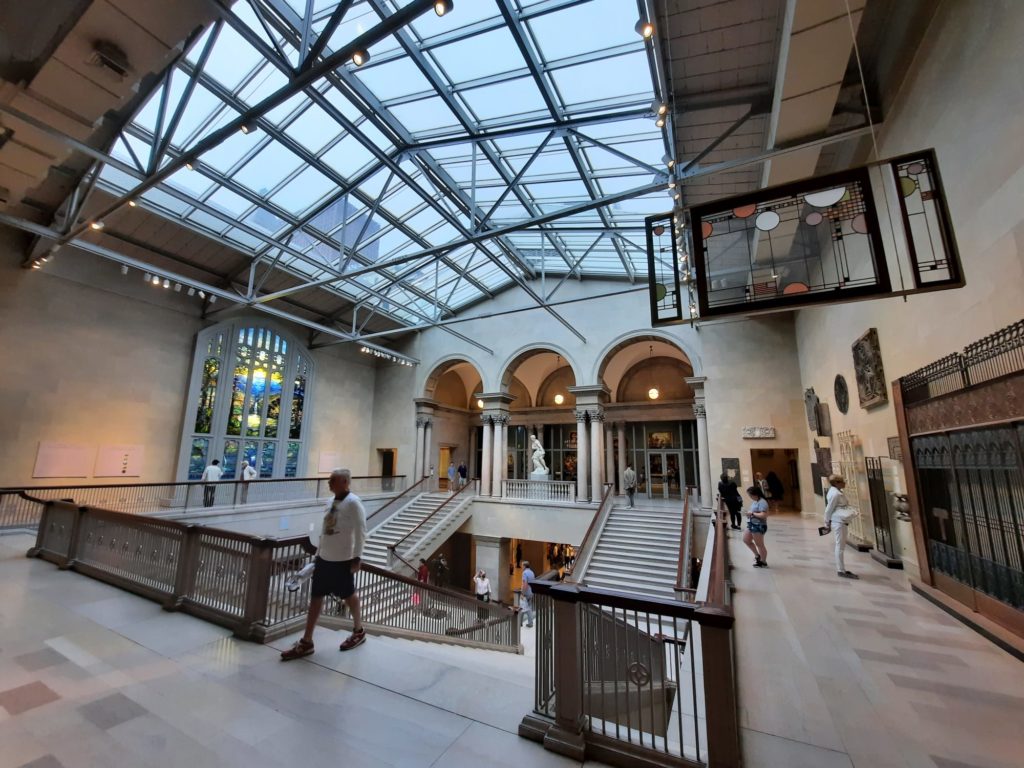
The Art Institute of Chicago: A Brief History
The history of the Art Institute goes back to the Chicago Institute of Design, founded in 1866. This organisation, modelled on European academies like our own Royal Academy, didn’t actually last long. They went bust after the Great Chicago Fire destroyed their building. But the Chicago Academy of Fine Arts soon popped up, and bought their assets at auction. The Academy changed its name to the Art Institute of Chicago in 1882.
Today, the Art Institute seems to be in a slightly odd location, bisected by railway tracks. In fact this is reflective of a very different landscape when the original wing was first built. Back then, the railway tracks were on the lakefront: everything beyond in Grant Park is reclaimed land. The older section of the building was originally for the World’s Columbian Exposition, 1892-93, with agreement that the Art Institute would move in afterwards. The newer part is a Renzo Piano extension which opened in 2009. The extension, the Modern Wing, houses modern and contemporary art, exhibition space and various facilities. Its design is sympathetic with the original Beaux-Arts wing.
Moving on from the architecture, the collection of the Art Institute is world-famous. It is a fairly encyclopedic museum. Its departments include American art, European painting and sculpture, decorative arts, ancient cultures, architecture and design, photography, contemporary art, textiles and more. There are many paintings that are instantly recognisable, including Seurat’s A Sunday Afternoon on the Island of La Grande Jatte, and Hopper’s Nighthawks. Or you may know the Art Institute and its collection from its appearance in Ferris Bueller’s Day Off.
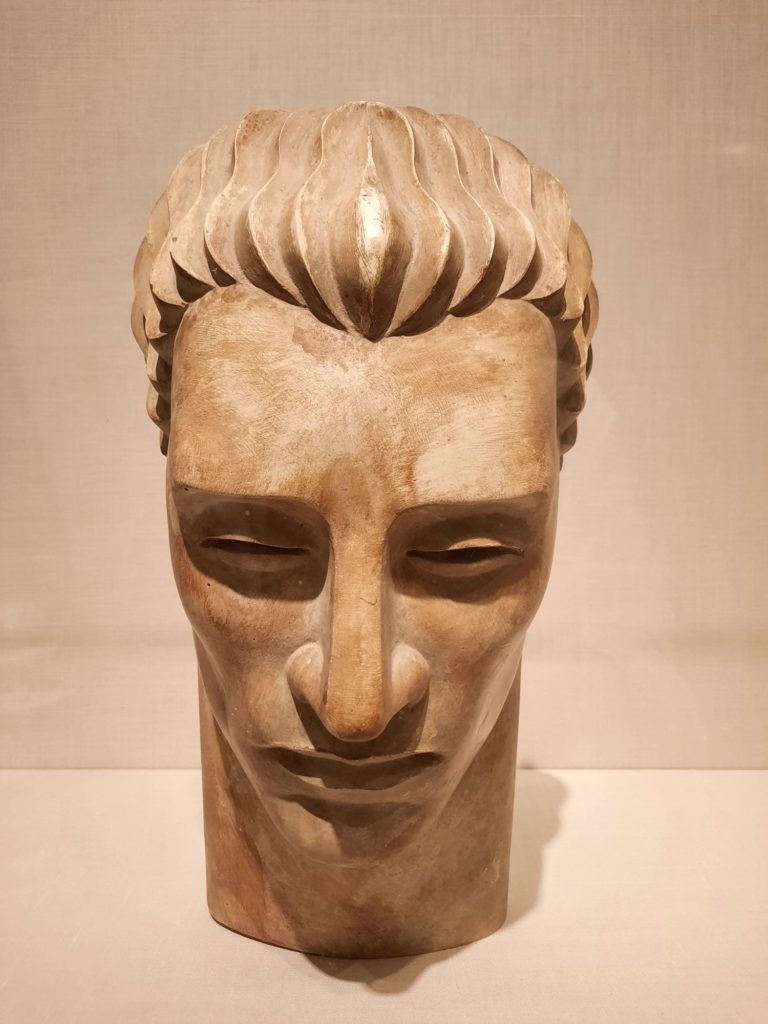

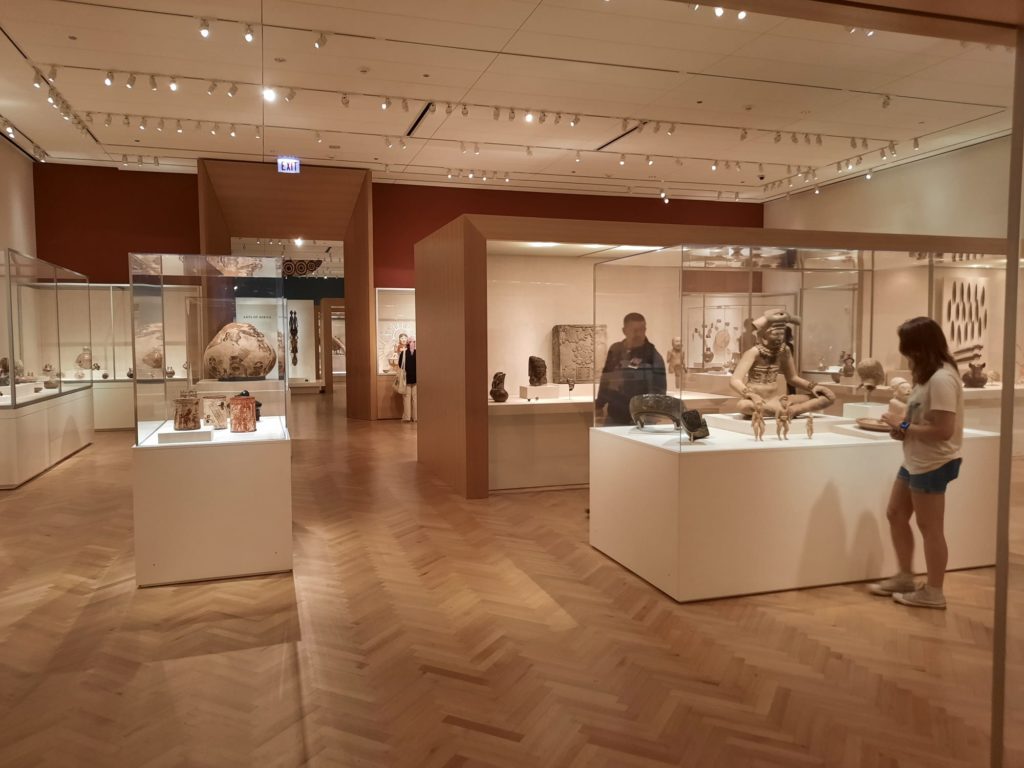

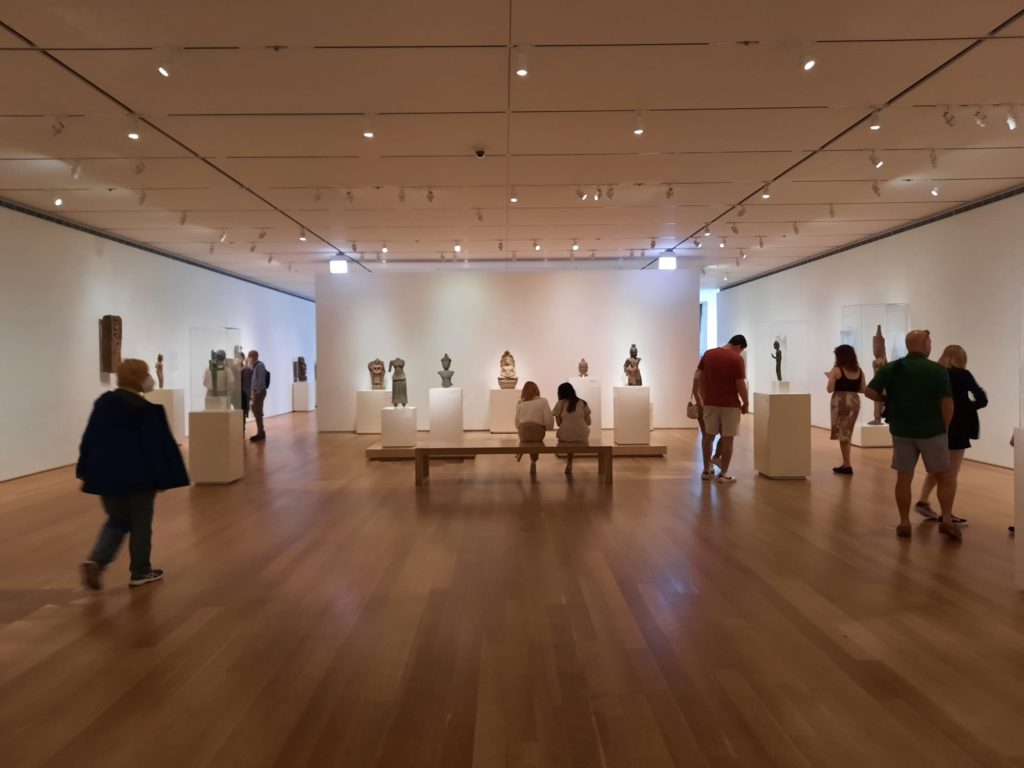
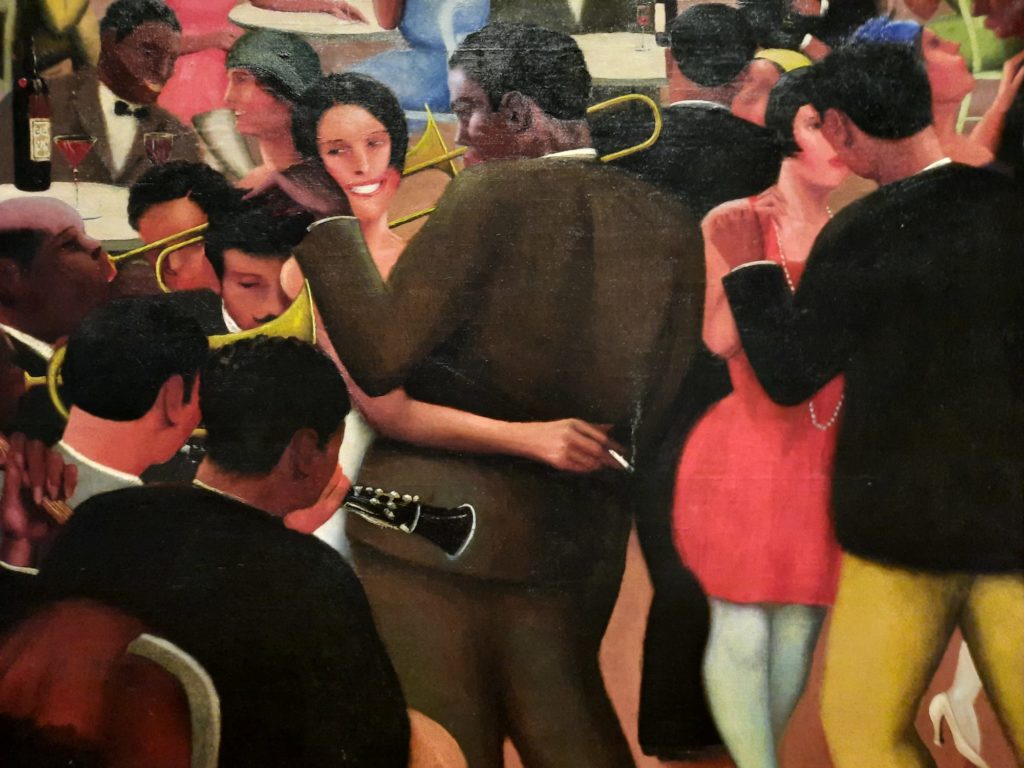
Some Highlights
With such a vast collection to choose from, it’s not hard to find something to love. The Art Institute is particularly strong in Impressionist and Post-Impressionist works. Think really excellent Van Goghs and Gauguins. The most famous, like the Seurat or Caillebotte’s Paris Street: Rainy Day are given plenty of space. As I found out the following week on a trip to MoMA, this makes all the difference for the works you know attract crowds.
There are also two types of collection I particularly look for, and the Art Institute delivered on both fronts. The first is American Art. This is specifically in the context of American museums. Maybe this is arrogance (or maybe it’s a great way to avoid museum fatigue), but I tend to spend a disproportionately small amount of time looking at classic European art when in museums in America. Instead, I prefer to seek out American art collections and see what is local and unique. I like all the naive colonial-era paintings, the Quaker and Shaker furniture, and the specifically American artistic styles. The Art Institute has a great selection – much stronger than their Art of the Americas gallery which felt like more of an overview than a collection with depth.
The other thing I look for are the quirky sub-collections. My favourite at the Art Institute was a collection of architectural fragments. My personal urban geographer may disagree, but Chicago is widely seen as the birthplace of the skyscraper. Buildings have come and gone, ever taller and more modern. But a memory of the urban fabric remains in this nicely presented selection of decorative stonework, metalwork and stained glass. It was an interesting reflection on the changing city, and a quiet moment in a busy museum.
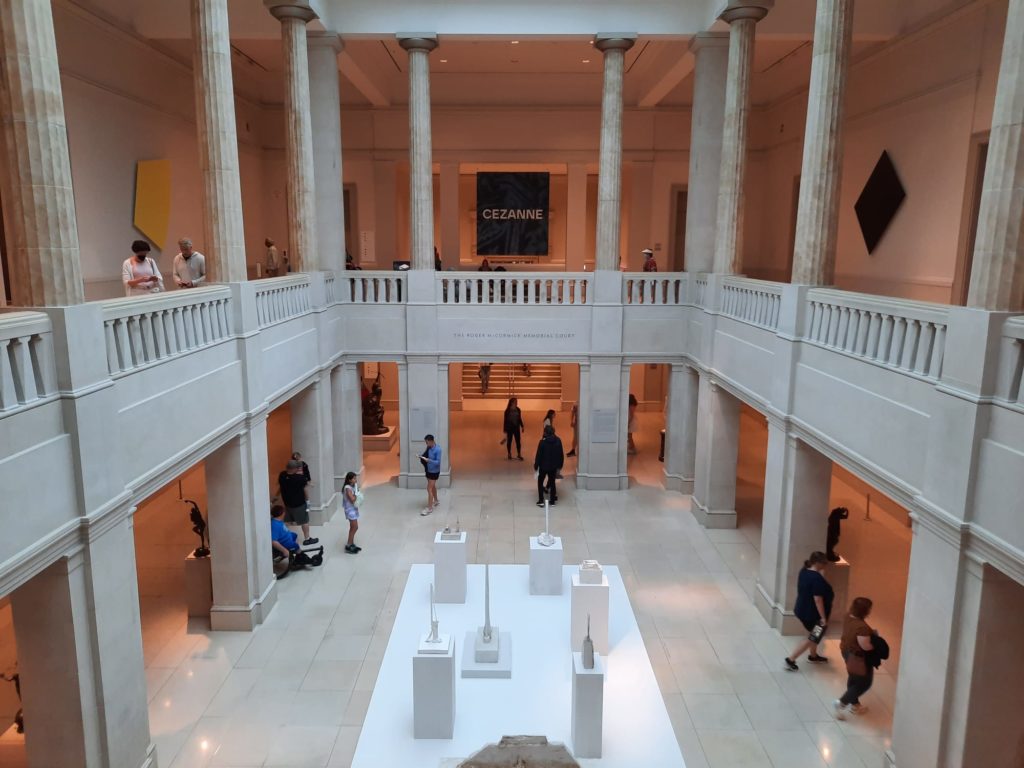
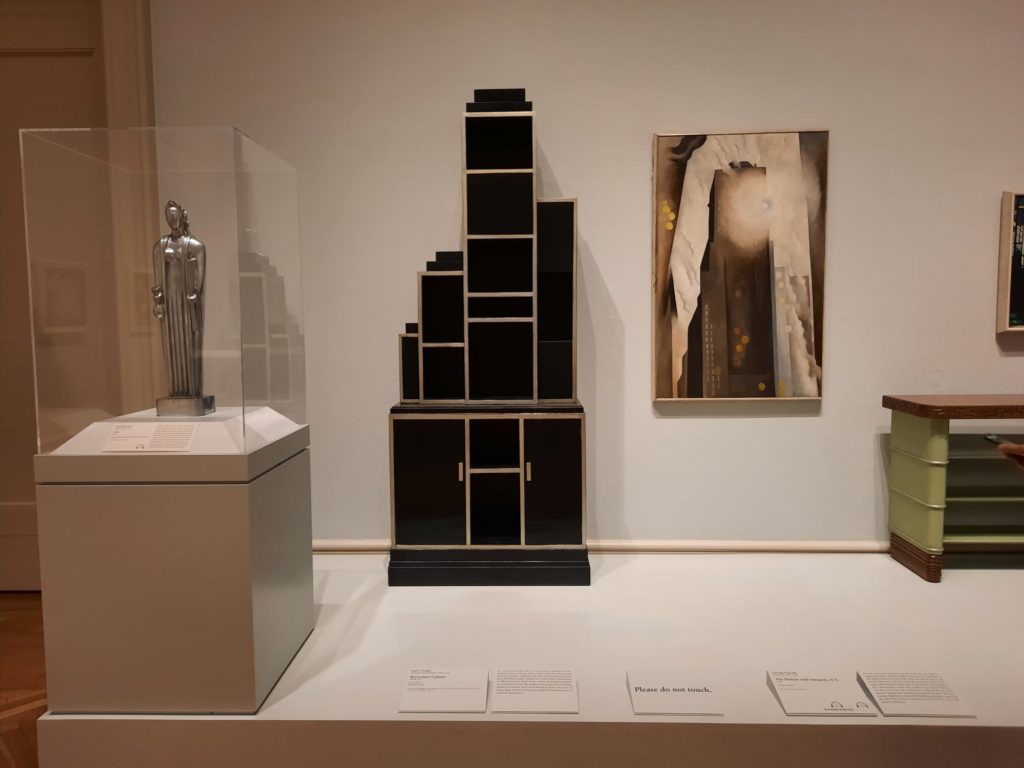
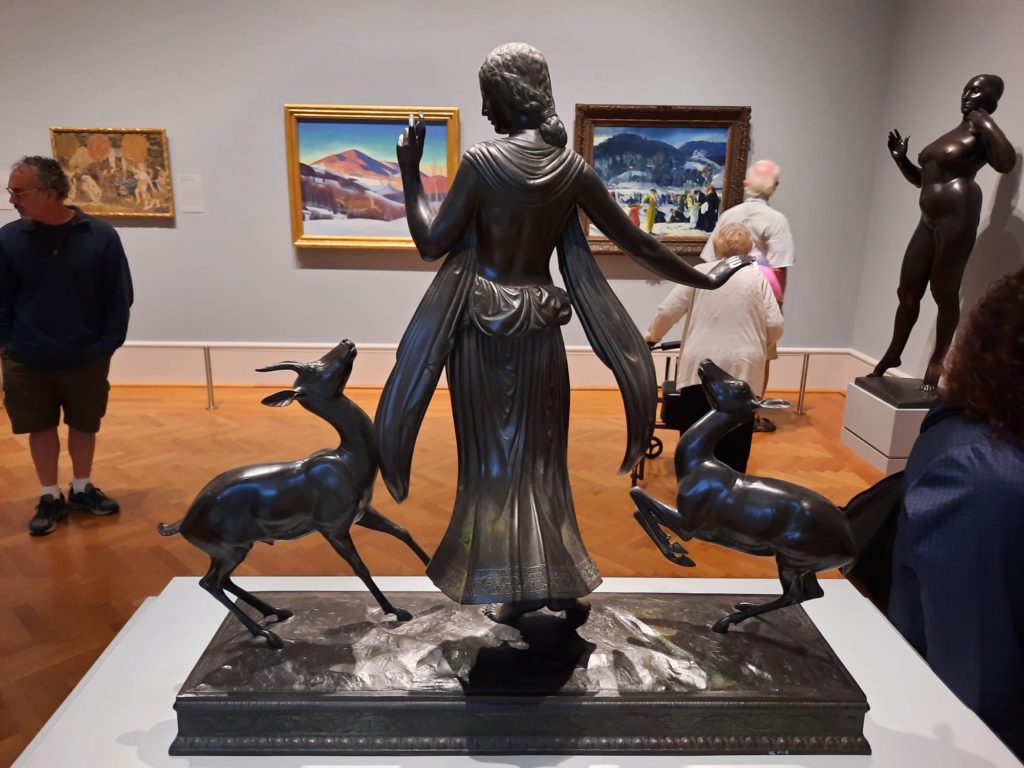
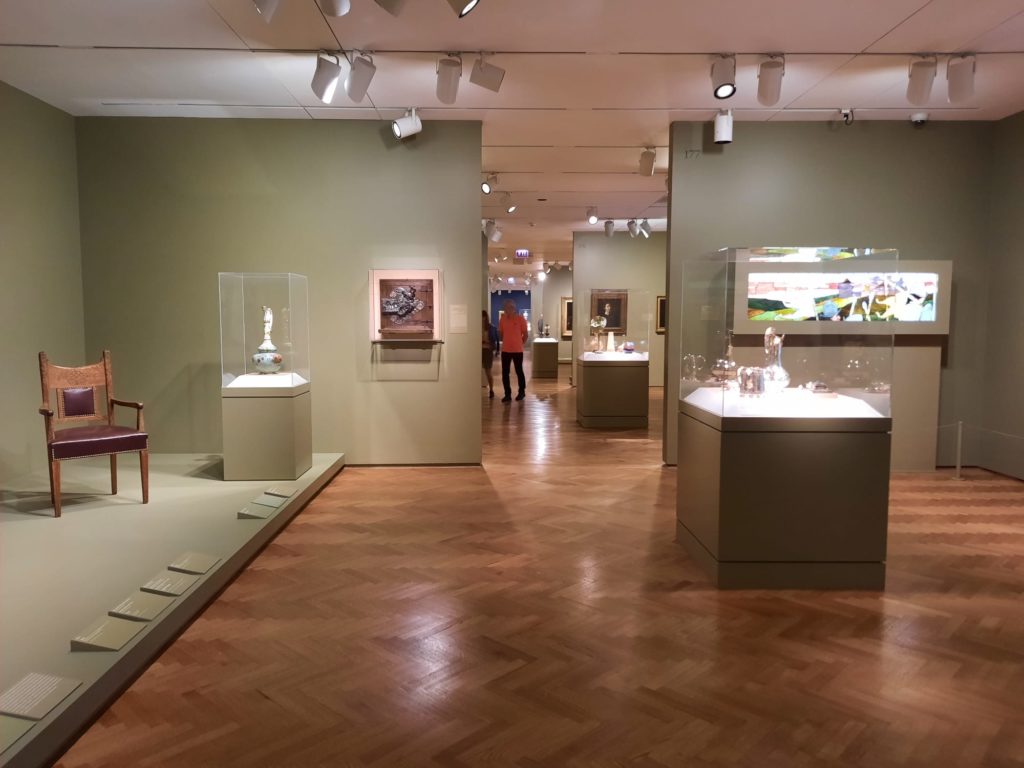
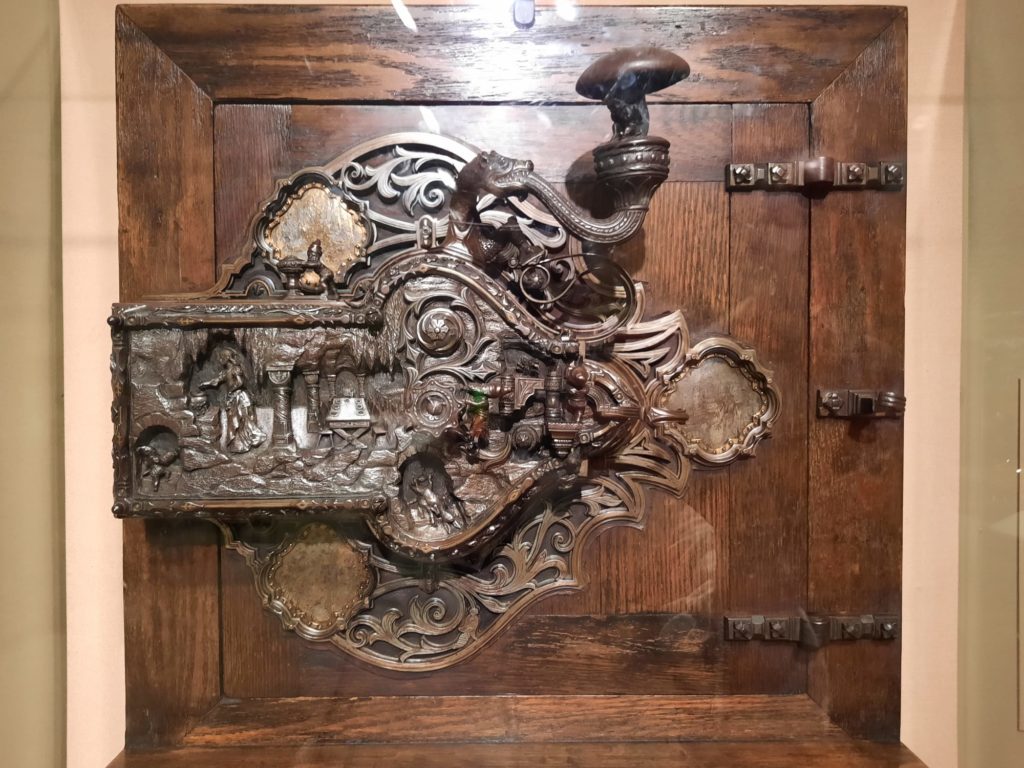
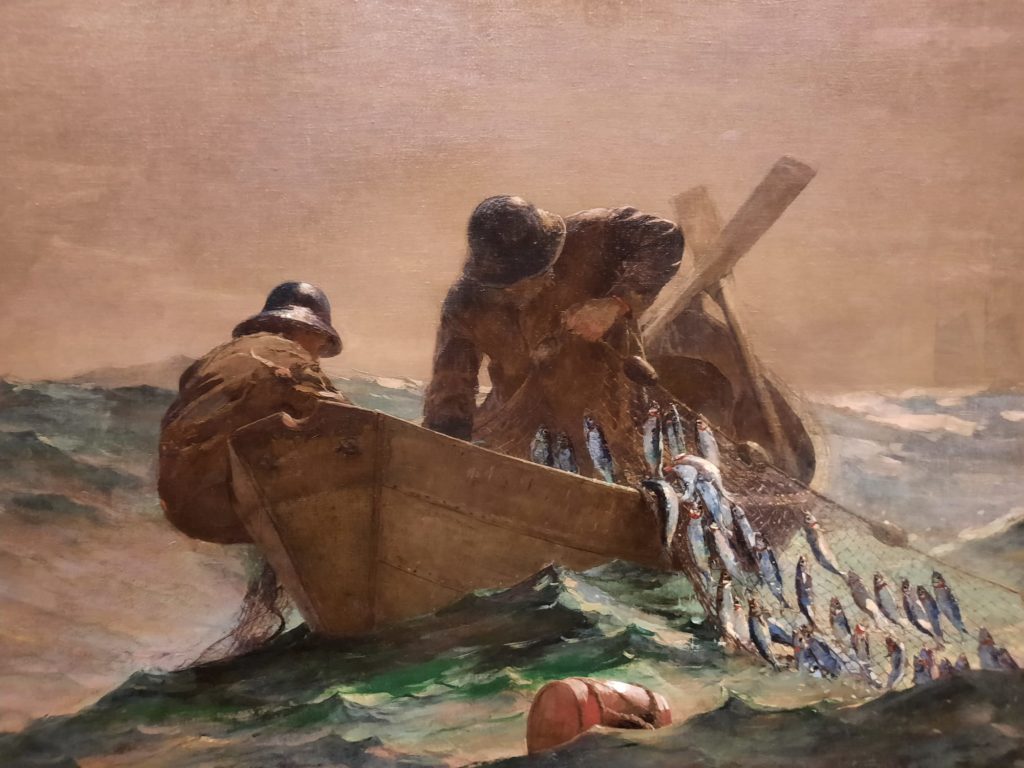
And Some Lowlights
The main gripe I have about the Art Institute of Chicago is that, when I visited, there were no food and drink facilities. Only one or two water fountains. I haven’t looked into why – whether it’s local regulations or staffing or a commercial decision. But it is a major drawback to the visitor experience.
With the original wing and the extension, we are talking about almost one million square feet. One million! And the Art Institute expect you to handle that with nary a sandwich or a sugary treat to keep you going. To be fair to them, the ticket is for the day so they allow you to come and go. But I didn’t see a lot of nearby options, particularly in the rain. And I even saw one grandmother/grandson sit down in what clearly used to be a cafe, pull out a sandwich, and get told off as ‘you can’t eat that here’. For me it’s not just the blood sugar, it’s also the mental break of going off to do something different for a while then coming back for some more art. So my time in the museum was much shorter than I would have managed with a cafe break.
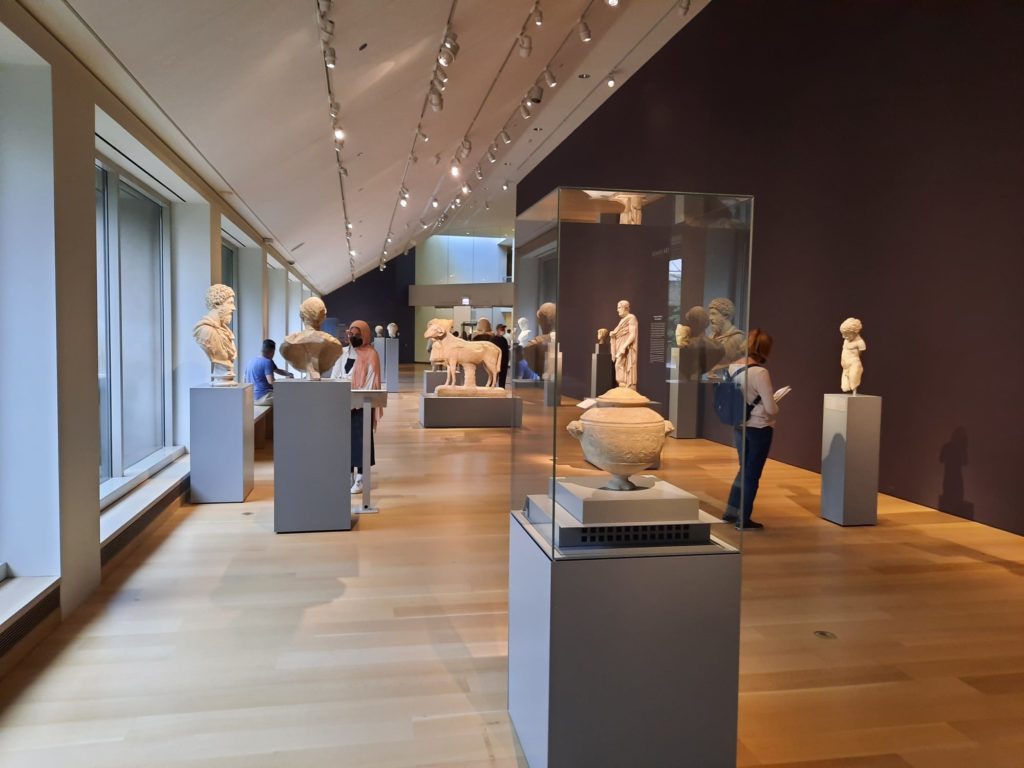
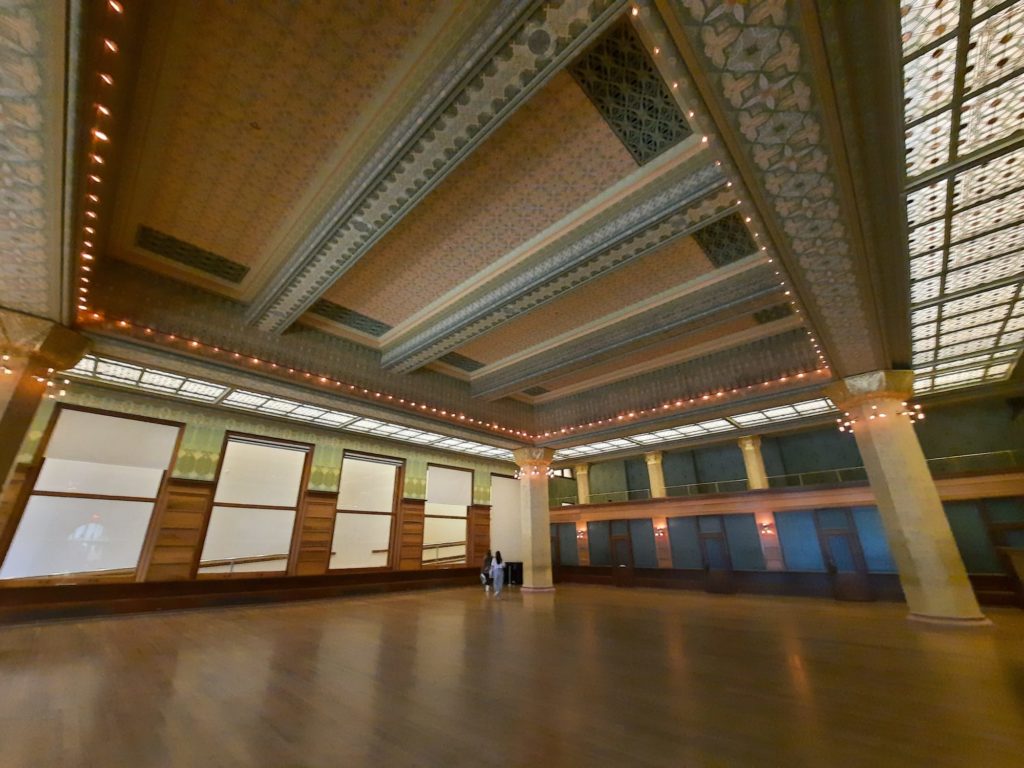
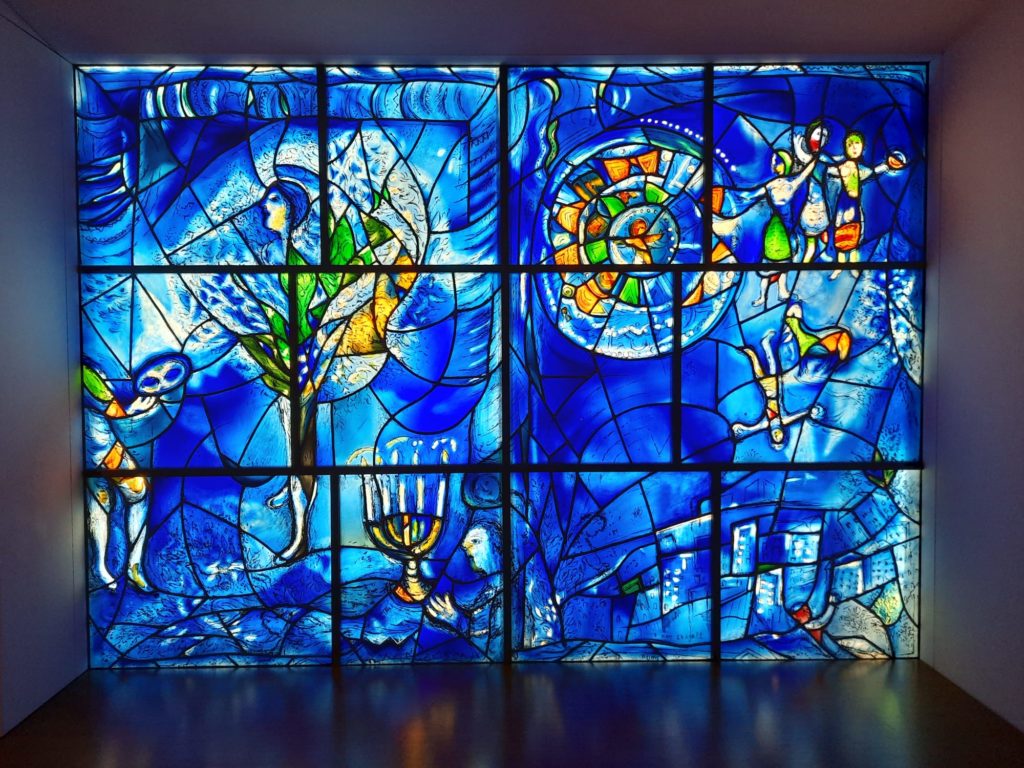
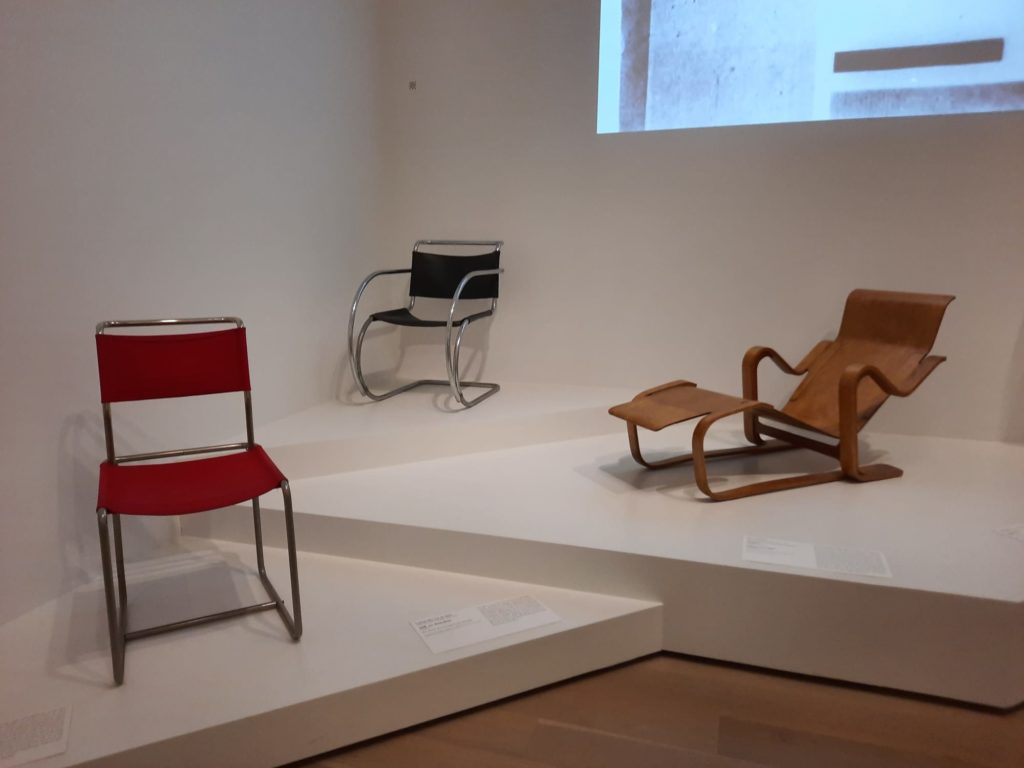
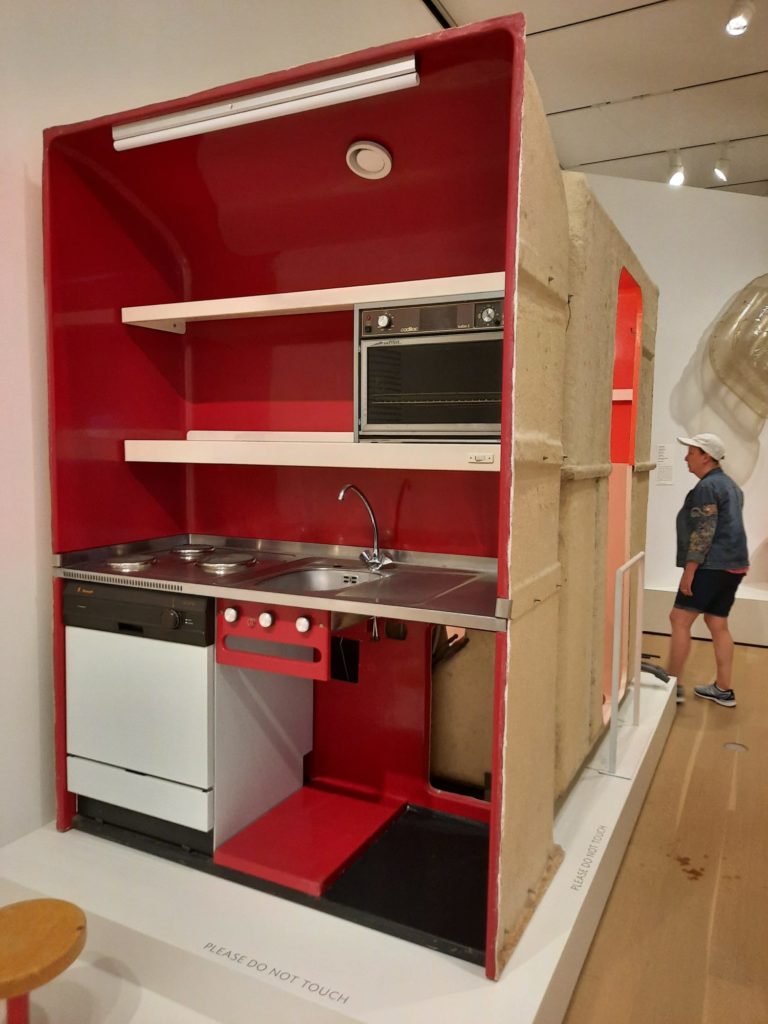
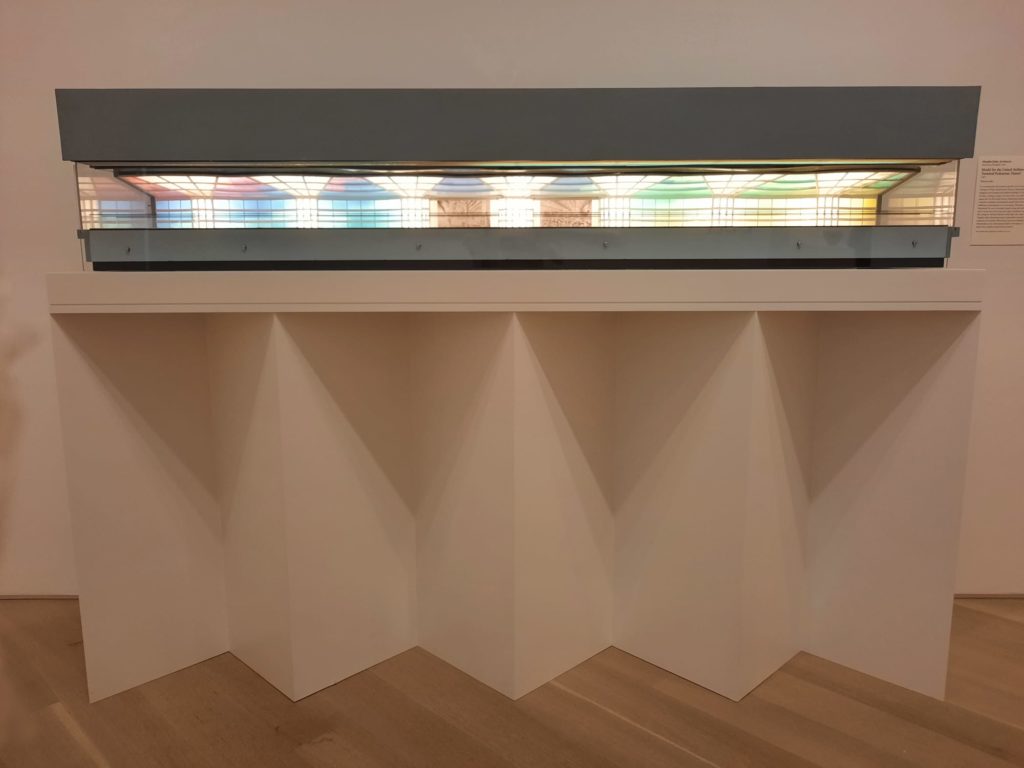
A Few Tips
Given all of that, what tips does the Salterton Arts Review have for the prospective visitor?
- Plan it like a military operation. This is a big museum. With collections spanning pretty much all of the arts. Focus in on your highlights, and plot a sensible route that gets you to them while you still have some energy.
- Take your time. The Art Institute are pretty good with seating, and its nice to sit and people watch around some of the busier works. It’s also a good way to see said works without feeling hurried.
- Leave more time than you think you need. See again the first point above. It’s big. Even just walking around takes quite a while because of the funny layout spanning the train tracks. It’s not a place you want to visit under time pressure.
- Bring a snack. Not to eat inside, because you’re not allowed. But if we had known the cafes were closed (and if it had been better weather), it would have been quite nice to have a picnic lunch in the park between artistic stints.
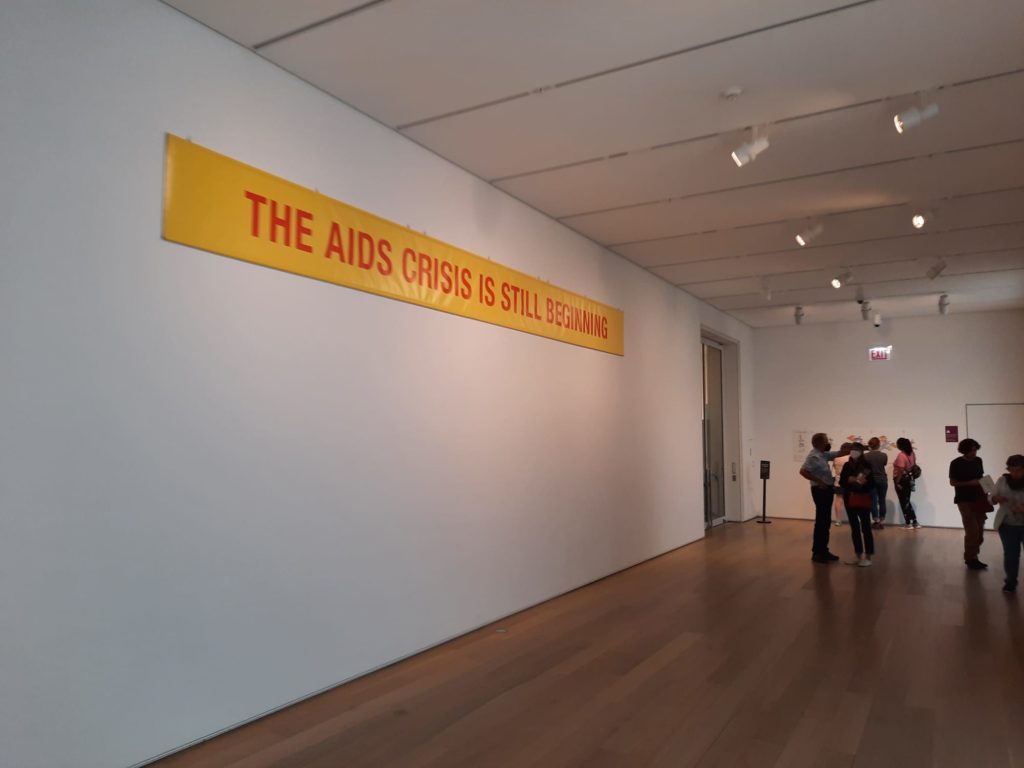
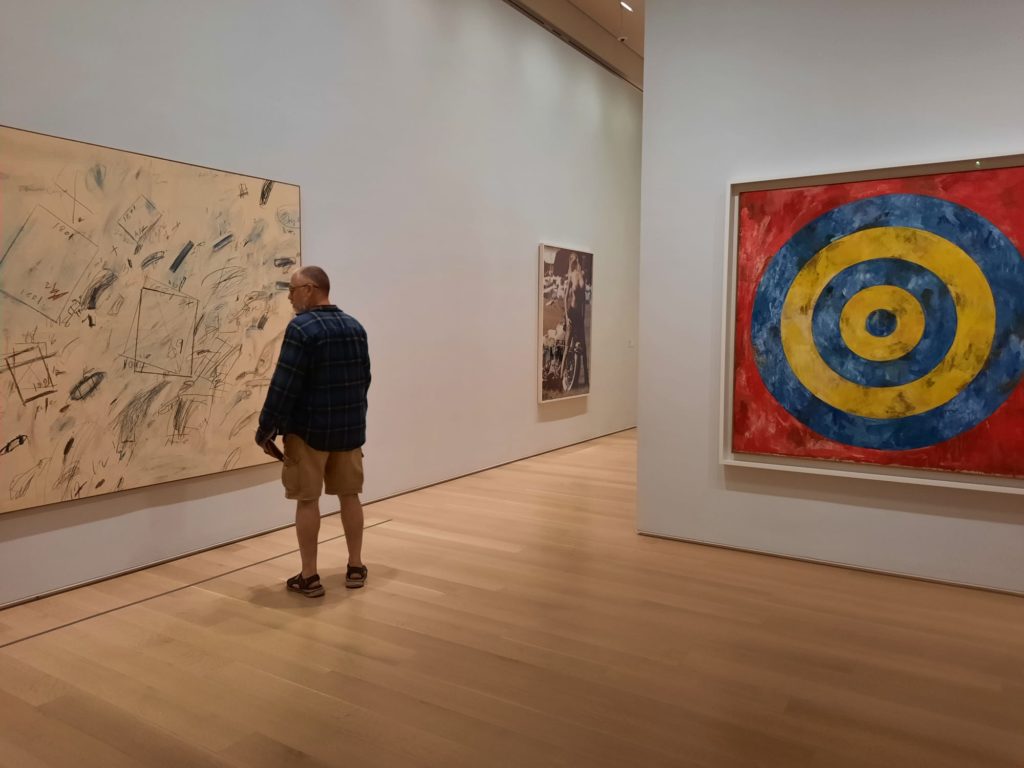
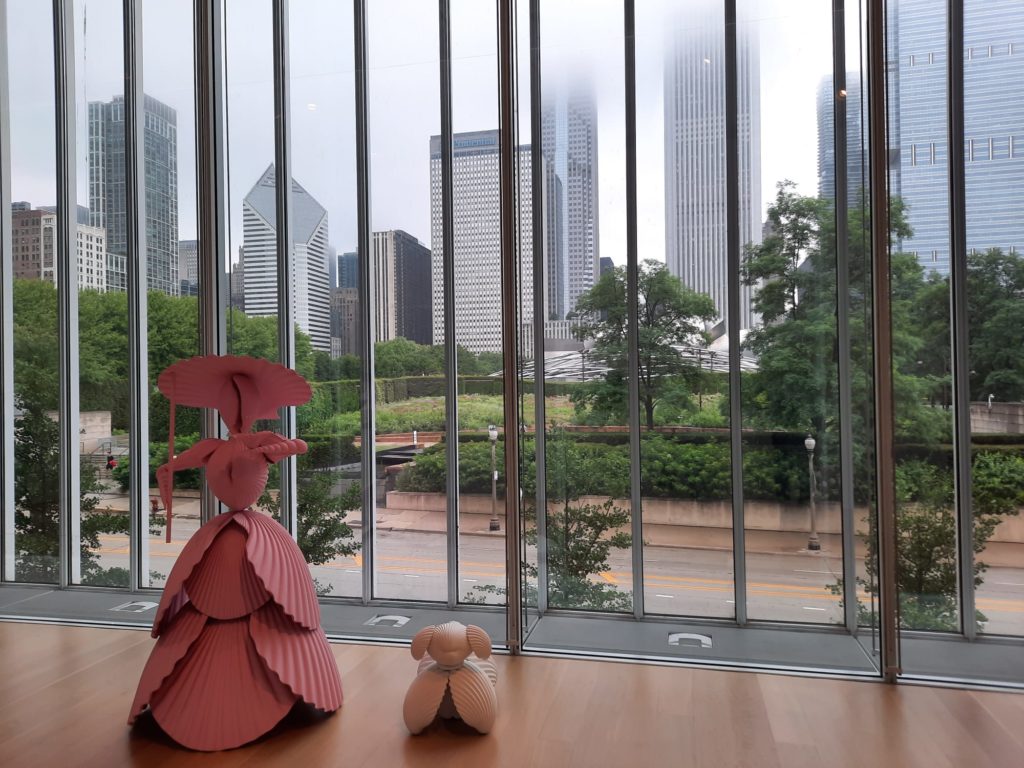
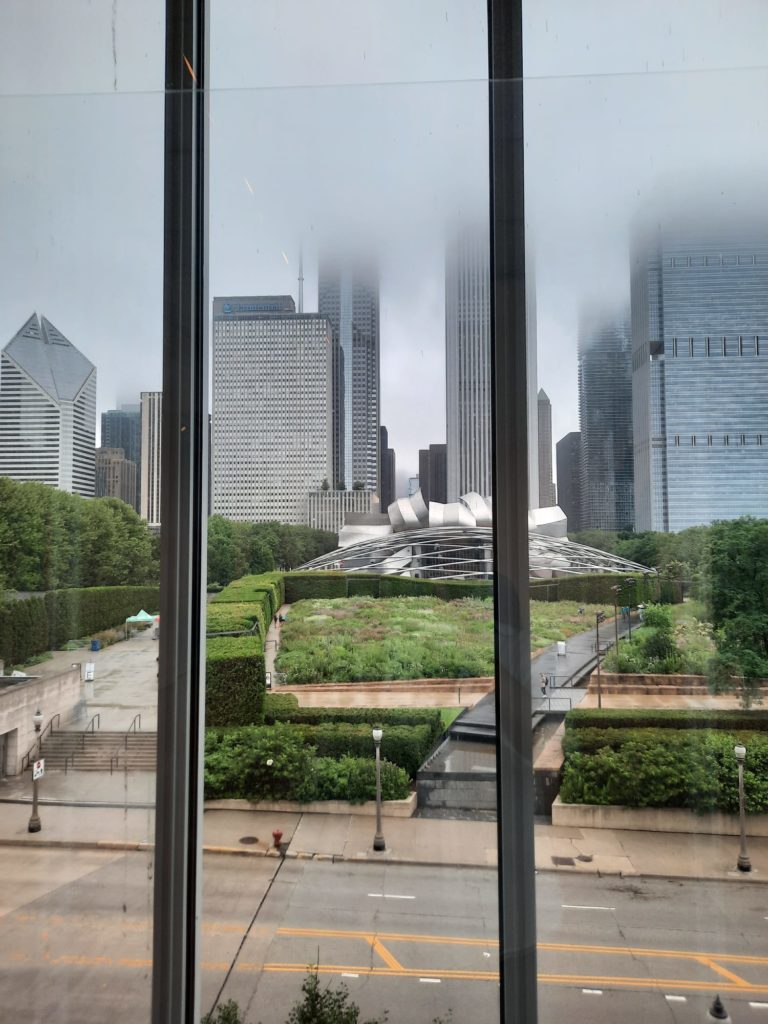

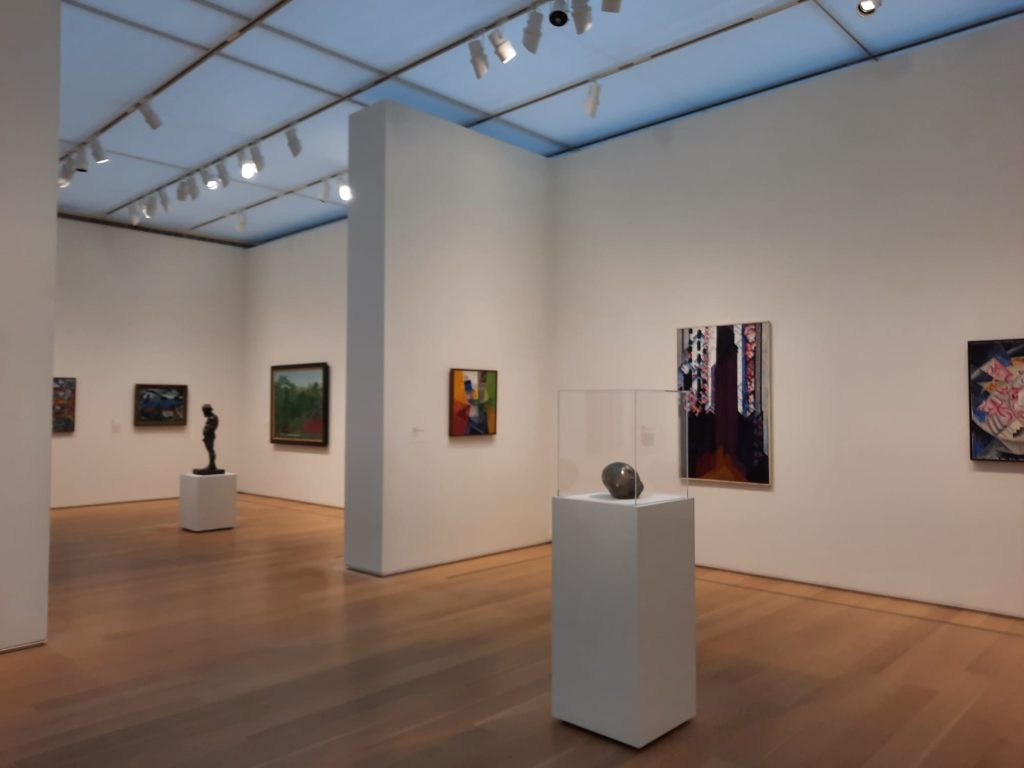
Final Thoughts On The Art Institute Of Chicago
If you’re a museum lover, you will definitely want to see the Art Institute of Chicago at some point in your life. Its fame is well-deserved. It’s a great museum with a great collection, nicely presented. All the big hitters are here, as well as some unexpected finds. You’ll love it.
If I have the chance to go back in future when things are more back to ‘normal’, I will be interested in the comparison. To be honest, I didn’t expect such a major museum to still be lacking basic facilities. I can’t think of any big London institutions where this is the case. But as I continued my brief US journey I saw other signs of how badly hit the cultural sector was here. In the end I’m just glad that I had the opportunity to visit and bask in glorious art for a few short hours.
Salterton Arts Review’s rating: 3.5/5
Trending
If you see this after your page is loaded completely, leafletJS files are missing.

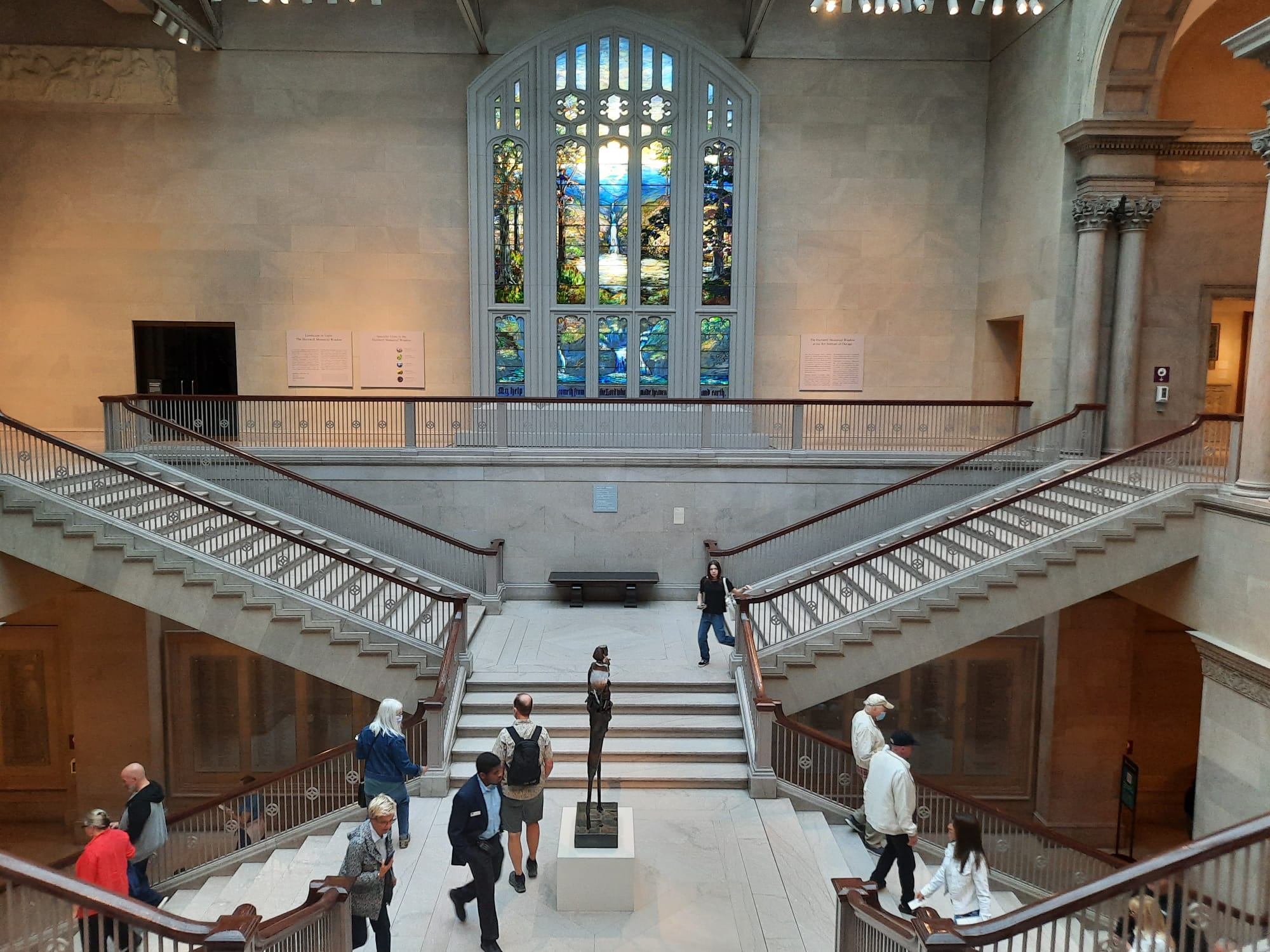
3 thoughts on “The Art Institute of Chicago”